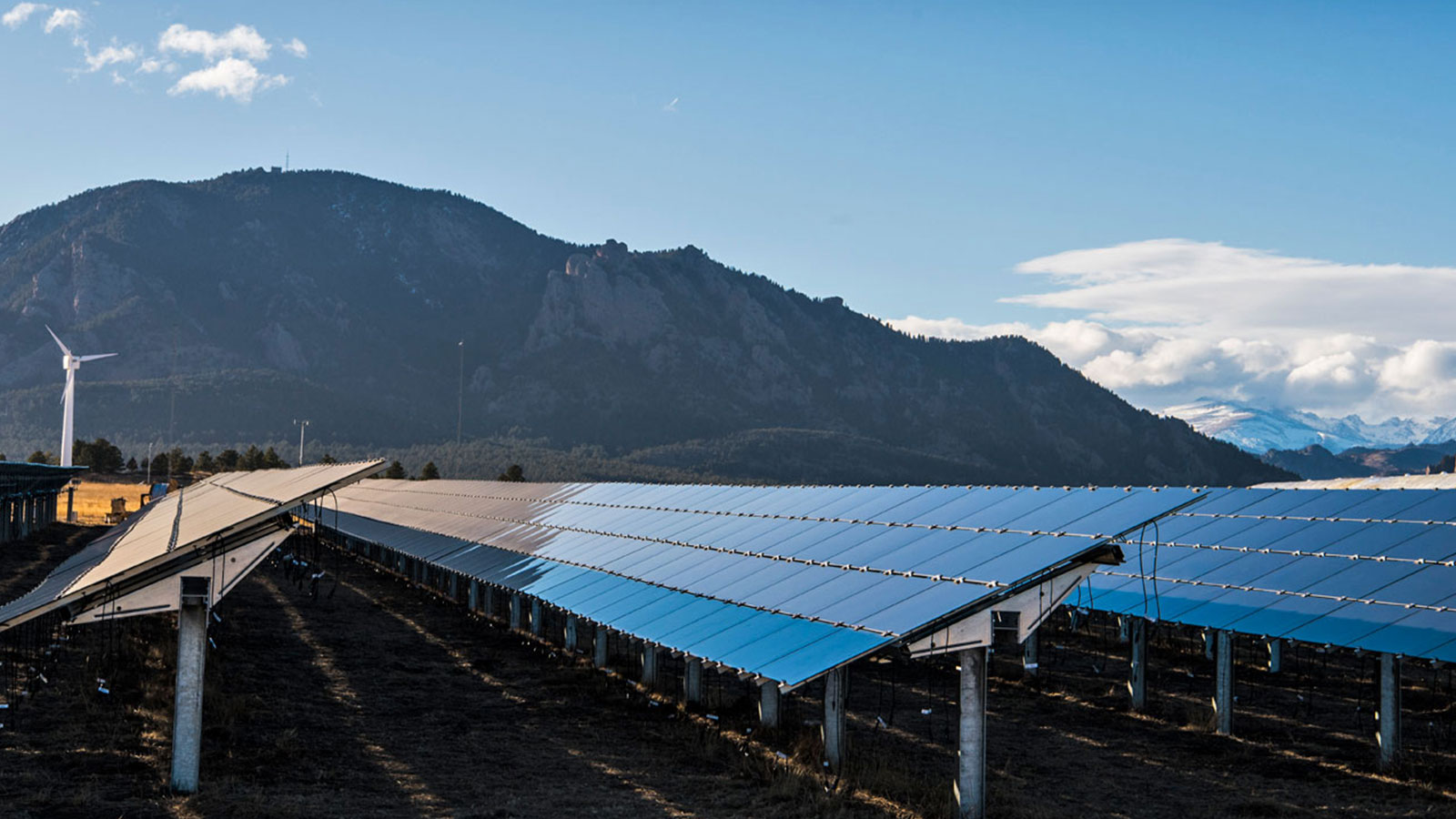Most solar panels covering the world’s rooftops, fields, and deserts today share the same ingredient: crystalline silicon. The material, made from raw polysilicon, is shaped into wafers and wired into solar cells, devices that convert sunlight into electricity. Recently, the industry’s dependence on this singular technology has become something of a liability. Supply chain bottlenecks are slowing down new solar installations worldwide. Major polysilicon suppliers in China’s Xinjiang region — accused of using forced labor from Uyghurs — are facing U.S. trade sanctions.
Fortunately, crystalline silicon isn’t the only material that can help harness the sun’s energy. In the United States, scientists and manufacturers are working to expand production of cadmium telluride solar technology. Cadmium telluride is a type of “thin film” solar cell, and, as that name suggests, it’s much thinner than a traditional silicon cell. Today, panels using cadmium telluride supply about 40 percent of the U.S. utility-scale market, and about 5 percent of the global solar market. And they stand to benefit from the headwinds facing the broader solar industry.
“It’s a very volatile time, especially for the crystalline silicon supply chain in general,” said Kelsey Goss, a solar research analyst for the energy consultancy group Wood Mackenzie. “There’s great potential for cadmium telluride manufacturers to take more market share in the coming year.” Especially, she noted, since the cadmium telluride sector is already scaling up.
In June, the solar manufacturer First Solar said it would invest $680 million in a third cadmium telluride solar factory in northwest Ohio. When the facility is finished, in 2025, the company will be able to make 6 gigawatts’ worth of solar panels in the area. That’s enough to power roughly 1 million American homes. Another Ohio-based solar firm, Toledo Solar, recently entered the market and is making cadmium telluride panels for residential rooftops. And in June, the U.S. Department of Energy and its National Renewable Energy Laboratory, or NREL, launched a $20 million program to accelerate research and grow the supply chain for cadmium telluride. One of the goals of the program is to help insulate the U.S. solar market from global supply constraints.
Researchers at NREL and First Solar, previously called Solar Cell Inc., have worked together since the early 1990s to develop cadmium telluride technology. Cadmium and telluride are byproducts of smelting zinc ores and refining copper, respectively. Whereas silicon wafers are wired together to make cells, cadmium and telluride are applied as a thin layer — about one-tenth of the diameter of a human hair — to a pane of glass, along with other electricity-conducting materials. First Solar, now the world’s largest thin film manufacturer, has supplied panels for solar installations in 45 countries.
The technology has certain advantages over crystalline silicon, said NREL scientist Lorelle Mansfield. For instance, the thin film process requires fewer materials than the wafer-based approach. Thin film technology is also well-suited for use in flexible panels, like ones that cover backpacks or drones or are integrated into building façades and windows. Importantly, the thin film panels perform better in hot temperatures, while silicon panels can overheat and become less efficient at generating electricity, she said.
But crystalline silicon has the upper hand in other areas, such as their average efficiency — meaning the percentage of sunlight that panels absorb and convert into electricity. Historically, silicon panels have had higher efficiencies than cadmium telluride technology, though the gap is narrowing.Today’s industrially produced silicon panels can achieve efficiencies of 18 to 22 percent, while First Solar has reported an average efficiency of 18 percent for its newest commercial panels.
Still, the main reason silicon has dominated the global market is relatively simple. “It all comes down to the cost,” Goss said. “The solar market tends to be highly driven by the cheapest technology.”
Crystalline silicon costs about $0.24 to $0.25 to produce each watt of solar power, which is less than other contenders, she said. First Solar said it no longer reports the cost-per-watt to produce its cadmium telluride panels, only that costs have “declined significantly” since 2015 — when the company reported costs of $0.46 per watt — and continue to drop every year. There are a few reasons for silicon’s relative cheapness. The raw material polysilicon, which is also used in computers and smartphones, is more widely available and inexpensive than supplies of cadmium and telluride. As factories for silicon panels and related components have scaled up, the overall costs of making and installing the technology have declined. The Chinese government has also heavily supported and subsidized the country’s silicon solar sector — so much so that about 80 percent of the world’s solar manufacturing supply chain now runs through China.
Falling panel costs have driven the global solar boom. Over the last decade, the world’s total installed solar capacity has seen a nearly tenfold increase, from about 74,000 megawatts in 2011 to nearly 714,000 megawatts in 2020, according to the International Renewable Energy Agency. The United States accounts for about one-seventh of the world’s total, and solar is now one of the largest sources of new electricity capacity installed in the U.S. every year.
The cost per watt of cadmium telluride and other thin film technologies is similarly expected to shrink as manufacturing expands. (First Solar says that when its new Ohio facility opens, the company will deliver the lowest cost per watt on the entire solar market.) But cost isn’t the only metric that matters, as the industry’s current supply chain issues and labor concerns make clear.
Mark Widmar, CEO of First Solar, said the company’s planned $680 million expansion is part of a larger effort to build a self-sufficient supply chain and “decouple” the U.S. solar industry from China. Although cadmium telluride panels don’t use any polysilicon, First Solar has felt other challenges facing the industry, like pandemic-induced backlogs in the maritime shipping industry. In April, First Solar told investors that congestion at American ports was holding up panel shipments from its facilities in Asia. Increasing U.S. production will allow the company to use roads and railways to ship its panels, not cargo ships, Widmar said. And the company’s existing recycling program for its solar panels allows it to reuse materials many times over, further reducing its reliance on foreign supply chains and raw materials.
As First Solar churns out panels, scientists at both the company and NREL continue to test and improve cadmium telluride technology. In 2019, the partners developed a new approach that involves “doping” the thin film materials with copper and chlorine to achieve even higher efficiencies. Earlier this month, NREL announced the results of a 25-year field test at its outdoor facility in Golden, Colorado. A 12-panel array of cadmium telluride panels was operating at 88 percent of its original efficiency, a strong result for a panel that’s sat outside for over two decades. The degradation “is in line with what silicon systems do,” according to the NREL release.
Mansfield, the NREL scientist, said the goal isn’t to replace crystalline silicon with cadmium telluride or establish one technology as superior to the other. “I think there’s a place for all of them in the market, and they each have their applications,” she said. “We want all energy to go to renewable sources, so we really need all of these different types of technology to meet that challenge.”





